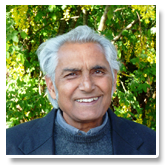 15th Jaina Studies Workshop
15th Jaina Studies Workshop
Date: 22 March 2013 Time: 9:00 AM
Finished: 22 March 2013 Time: 5:00 PM
Venue: Brunei Gallery Room: Brunei Gallery Lecture Theatre
Lecturer:

Abstract:
In dealing with the history of Jaina philosophical speculation after the age of the Āgamas, K.K. Dixt in his now well-known work Jaina Ontology (pp. 88-163) conveniently divides the speculations into three stages which he calls the 'Ages of Logic'. The 'Ages of Logic' can be understood as the logic of the arguments by Jaina thinkers in different periods, namely their arguments both against non-Jaina views as well as arguments in presenting their own standpoints. The thinkers of the first stage are Siddhasena (especially his Sanmatitarka), Mallavādin (Nayacakra), Jinabhadra (Viśeṣāvaśyakabhāṣya), Kundakunda with his three Sāras and Samantabhadra's Āptamīmīmāṃsā. Representatives of the second stage are Haribhadra, Akalaṅka and Vidyānandin. The third stage being made up by Abhayadeva, Prabhācandra, Vādideva and Yaśovijaya. Dixit's statements about Prabhācandra are not quite consistent. On the one hand, he says on p. 103 'that the range of Prabhācandra's enquiry 'was less comprehensive than that of Vidyānandin and his treatment of topics less advanced than that of the latter'. And on the other hand, on p. 156 he says that Prabhācandra 'had made it a point to introduce in his commentaries an exhaustive and systematic discussion of the major philosophical issues of his times (even including aspects not found in his predecessors, e.g. theories of error). This paper will attempt to bring out Prabhācandra's status or position in the history of Jaina philosophical speculation and his contribution as an important Digambara thinker in his own right.
Video:

 Dr. Jayandra Soni
Dr. Jayandra Soni